What’s the ROI of Automated Pallet Changing Machines in Italy's Ergonomic Sector?
Are you watching your operational costs climb while your team struggles with slow, physically demanding, and often dangerous manual tasks? Many business owners, especially in heavy industries, face this problem daily. The process of moving goods from one pallet to another seems simple, but it creates a major bottleneck. This manual labor not only slows down your entire production line but also leads to product damage and, worse, workplace injuries. The costs of inefficiency, damaged goods, and employee compensation claims add up, eating directly into your profits. In a highly regulated market like Italy, failing to meet strict ergonomic standards can also result in significant fines and legal trouble. It feels like a battle you can't win.
But there is a clear solution. Automated pallet changing machines are designed to solve these exact problems. They offer a direct path to higher efficiency, improved safety, and better compliance. The real question is not if they help, but how much. What is the actual, quantifiable return on investment (ROI) you can expect?
The ROI of automated pallet changing machines in Italy's ergonomic sector is typically realized within 18-36 months. This return is driven by significant reductions in direct labor costs, a near-elimination of product damage during handling, and a substantial increase in throughput. Crucially, this is all achieved while ensuring full compliance with stringent ergonomic safety regulations like Italy's Legislative Decree 81/2008.
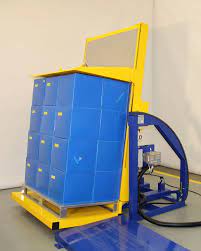
That's the short answer. But as a fellow engineer and business owner, I know you need more than a simple number. I built my company, SHJLPACK, from the ground up, starting on the factory floor. I understand that every major investment requires a solid business case. You need to see the data, understand the mechanics behind the numbers, and be confident in the long-term value. So, let's break down the specific factors that contribute to this ROI. We will look at how these machines transform your operations, helping you build a clear and compelling case for your own facility.
How do pallet changers directly impact operational efficiency and labor costs in Italy?
Are you constantly battling high labor costs for manual, repetitive tasks? Do you look at your production floor and see skilled workers tied up in low-value jobs like restacking boxes or bags from one pallet to another? This is a common sight in many factories, and it's a huge drain on resources.
This isn't just about the direct cost of salaries. It's about the lost opportunity. Every hour a skilled employee spends on manual handling is an hour they are not spending on quality control, machine maintenance, or process improvement—the very tasks that drive your business forward. In a place like Italy, where labor laws are protective and costs are high, the price of this inefficiency is magnified. You're paying skilled wages for unskilled work, and it's holding your entire operation back.
Automated pallet changers tackle this problem head-on. They don't just speed up a single task; they transform your workflow. By automating the pallet transfer process, you can reallocate your most valuable asset—your people—to roles where their skills can create real, measurable value for your company.
Pallet changers directly impact operational efficiency by automating the transfer of goods, which reduces cycle times from several minutes to under 60 seconds. This can lead to a labor cost reduction of up to 70% for these specific tasks, as a single operator can now oversee an automated process that previously required two or three workers. This frees your team to focus on more complex and valuable duties.
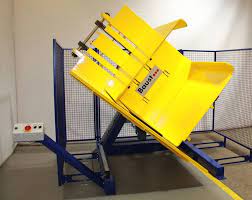
When I started my own packing machine factory, I faced this exact challenge. Labor was one of my biggest and most unpredictable expenses. I remember watching two of my best technicians spend nearly half their day manually moving heavy steel wire coils from wooden pallets to stronger, sanitized plastic ones for a specific client. It was slow, physically draining work, and frankly, a complete waste of their talent. I saw the bottleneck it created and the risk of injury.
That experience pushed me to develop our first automated pallet changing solution. Implementing it was a game-changer. It wasn't about replacing those two employees. It was about empowering them. After the machine was installed, one of them could oversee the entire pallet transfer process for the whole shift in just a fraction of the time. The other was able to focus on calibrating our wrapping machines, which improved our product quality and reduced downtime. Our throughput for that product line increased by over 30% in the first month. We didn't cut our staff; we elevated their roles and made our entire operation more profitable.
From Manual Bottleneck to Automated Throughput
The most immediate impact of a pallet changer is speed. A manual pallet swap is slow and variable. It depends on the number of workers, the weight of the product, and their energy levels. An automated system is consistent, predictable, and fast.
| Metric | Manual Pallet Change | Automated Pallet Change | Impact |
|---|---|---|---|
| Time per Pallet | 5-10 minutes | < 1 minute | 80-90% reduction in cycle time |
| Workers Required | 2-3 | 1 (supervisor) | 50-70% reduction in labor |
| Consistency | Low (varies by team) | High (machine-paced) | Predictable, stable output |
| Product Damage Risk | High | Extremely Low | Improved quality, less waste |
This raw speed translates directly into higher throughput. If you can process a pallet every minute instead of every ten minutes, you've eliminated a major bottleneck. This allows your entire production line, from manufacturing to shipping, to run more smoothly and efficiently. This is critical for meeting the goals of a high-capacity facility, like increasing equipment effective run time to 95%.
Re-evaluating Labor Allocation and Costs
The financial impact goes beyond just reassigning workers. The direct savings on labor are significant. You reduce the hours needed for low-skill tasks, which lowers payroll costs. But the indirect savings are just as important. You reduce the costs associated with recruitment, training, and management for these manual handling positions. Most importantly, you drastically lower the risk of workplace injuries, which carry heavy costs in terms of medical bills, insurance claims, and lost productivity. By automating this high-risk task, you invest in the well-being of your team and the financial health of your company.
You have done the initial math. You have the quote for the new pallet changing machine, and you have calculated the potential savings. But as a seasoned business leader, you know the sticker price is never the full story. You are right to be concerned about the hidden costs that can emerge during and after installation.
These unexpected expenses can quickly erode a project's projected ROI. Things like complex site preparation, software integration issues, or extended team training can turn a smart investment into a financial headache. On the other hand, focusing too narrowly on the initial purchase price can be just as damaging. If you choose a cheaper, less capable machine, you might miss out on enormous long-term benefits that a better-suited system would have delivered.
A true strategic partner helps you see the complete financial picture, from day one to year ten. It is my mission at SHJLPACK to be that partner. Let's look beyond the initial quote to understand the total cost of ownership and uncover the real, long-term value that these machines can bring to your operation.
The primary hidden costs of implementing pallet changers can include site preparation, electrical and pneumatic line installation, and integration with existing MES/ERP systems. However, the long-term benefits almost always outweigh these initial outlays. These benefits include drastically reduced product damage, lower insurance premiums from fewer injuries, enhanced production line flexibility, and a stronger reputation for quality and safety in your supply chain.
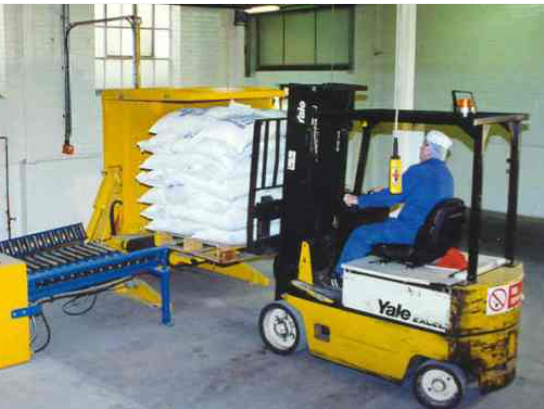
I learned this lesson firsthand with a client in the food and beverage industry. They bought a pallet inverter from a competitor based on a low initial price. They thought they were getting a great deal. However, the hidden costs started to pile up. The machine's control system was proprietary and couldn't communicate with their central production software. They had to pay a third-party integrator a huge fee to build a custom bridge. Then, they discovered the machine's standard clamping pressure was too high for some of their more delicate products, leading to crushed boxes and lost inventory. The "cheap" machine ended up costing them nearly double the initial price in fixes and lost product.
This is why we approach every project as a total solution. We analyze your product, your workflow, and your long-term goals before we even talk about a specific machine. A clear understanding of the total picture is the only way to guarantee a strong, predictable ROI.
Uncovering the Full Investment Picture
A responsible investment plan accounts for everything. A cheap machine with high long-term costs is a bad investment. A more expensive machine that delivers massive long-term value is a smart one.
| Cost Category | Description | Why It's Often "Hidden" |
|---|---|---|
| Site Preparation | Concrete reinforcement, clearing space, safety zones. | Not included in the machine quote. Assumed to be ready. |
| Utilities | New electrical lines, compressed air supply. | Requires licensed electricians/technicians. |
| Integration | Connecting the machine's PLC to your factory's MES/ERP. | Requires specialized software and IT knowledge. |
| Training | Training operators and maintenance staff on the new system. | Time is money. Pulling staff for training is an indirect cost. |
| Commissioning | Fine-tuning the machine with your actual products. | May require several days of testing and adjustments. |
Quantifying the Long-Term Financial Gains
The real power of this investment is revealed over time. These are not one-time savings; they are benefits that compound year after year. For a CEO focused on reducing overall operational costs by 8% or more, these gains are where the real strategic value lies. For example, if you ship 1,000 pallets a day and automation reduces damage by just 1%, you could be saving thousands of dollars every week. Lower injury rates don't just reduce insurance premiums; they improve morale and employee retention. These long-term benefits transform a simple machine purchase into a cornerstone of a more profitable and resilient operation.
How does automation in pallet handling align with Italy's focus on ergonomic workplace design (D.Lgs. 81/2008)?
Are safety regulations and complex ergonomic standards becoming a bigger and bigger part of your management focus? For any industrial operation in Europe, and especially in Italy, the answer is almost certainly yes.
Complying with comprehensive laws like Italy's Legislative Decree 81/2008 (Testo Unico sulla Sicurezza sul Lavoro) is not just a matter of legal obligation. It is a major operational and financial consideration. The risk of heavy fines, forced shutdowns, and damage to your company's reputation is very real. Handling compliance poorly creates constant stress and drains resources.
This is where automation becomes one of your most powerful tools. Investing in technology like pallet changers is not just about moving goods faster. It is about fundamentally re-engineering your processes to create a safer, healthier, and more compliant workplace. It's a proactive strategy to get ahead of the regulations, rather than constantly reacting to them.
Automation in pallet handling directly aligns with the core principles of Italy's D.Lgs. 81/2008 by systematically eliminating the root causes of workplace injuries. These machines remove the need for manual lifting, bending, and twisting under load—the exact activities that the law identifies as high-risk and requires employers to mitigate. This makes automation a primary tool for ensuring both employee safety and legal compliance.
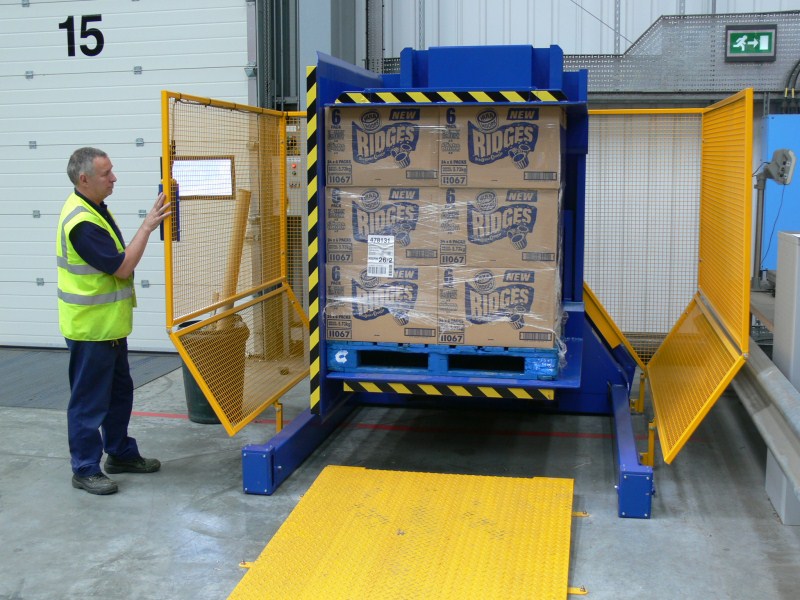
I have visited many factories over my career, from modern facilities to aging plants. One of the most common challenges I see, especially in heavy industries like steel manufacturing, is the physical toll of the work. I once consulted for a steel wire factory where, much like your operation, Javier, the products were heavy and difficult to handle. They had a team dedicated to manually transferring coils of steel wire from production pallets to shipping pallets. The rate of back and shoulder injuries was staggering. They were losing thousands of man-hours per year and their insurance costs were through the roof.
The management team was focused on the cost of the injuries, but the workers were focused on their health. The atmosphere was tense. We helped them install a heavy-duty pallet inverter with customized V-saddles to hold the coils securely. The impact was immediate. The machine did all the heavy lifting. The injury rate for that task dropped to zero within six months. But something else happened, too. The culture of the plant began to change. The workers saw that management was investing in their well-being. Trust improved, and morale went up. The investment wasn't just about complying with the law or calculating an ROI; it was about protecting their most valuable asset: their people.
Deconstructing Ergonomic Risks in Manual Handling
D.Lgs. 81/2008 requires employers to conduct a risk assessment for all tasks. Manual pallet handling consistently scores as a high-risk activity.
| High-Risk Manual Action | Ergonomic Hazard (as per D.Lgs. 81/2008) | How Automation Eliminates It |
|---|---|---|
| Lifting heavy boxes/bags | Risk of lumbar spine injury, hernias. | Machine lifts the entire pallet load. |
| Bending and reaching | Repetitive strain on back, knees, and shoulders. | Operator stands at an ergonomic control panel. |
| Twisting the torso | High risk of spinal disc injury. | The machine rotates or inverts the load smoothly. |
| Repetitive motion | Leads to chronic musculoskeletal disorders (MSDs). | A single automated cycle replaces hundreds of manual movements. |
Automation as a Proactive Compliance Tool
Instead of simply providing training or back belts (which are considered less effective controls), automation removes the hazard at its source. This is the highest level of protection recommended by safety professionals and regulatory bodies. By installing a pallet changer, you are not just ticking a box for a safety audit. You are providing your legal and safety teams with documented proof that you have engineered a solution to a known risk. This is a powerful position to be in during any regulatory inspection. It demonstrates a forward-thinking commitment to safety that goes far beyond basic compliance.
What specific features should a business in Italy look for in a pallet changer to maximize ROI?
You have decided that an automated pallet changer is the right move for your operation. Now you face the most critical step: choosing the right machine. Not all equipment is created equal, and the differences in design and capability can have a massive impact on your final ROI.
Making the wrong choice can be a costly mistake. You could invest in a machine that cannot handle your product's weight or dimensions. You might buy a system that is difficult to integrate with your existing production line, creating new bottlenecks instead of solving old ones. Or you could end up with a machine that is difficult to clean or maintain, leading to excessive downtime. You need a solution that is perfectly matched to your specific products, your facility's layout, and your long-term business goals.
Knowing which features to prioritize is the key to a successful investment. It is the difference between simply buying a piece of equipment and implementing a true solution. Let's discuss the critical features and specifications you should look for to ensure you get the maximum possible return from your new pallet changer.
To maximize ROI, a business in Italy should look for a pallet changer with features like adjustable clamping pressure to handle both delicate and heavy loads, full automation capabilities for seamless integration with conveyors and AGVs, and robust safety systems, including light curtains and physical guarding that meet or exceed European CE standards. The ability to customize the machine to specific product types, such as steel coils or bulk bags, is also critical.
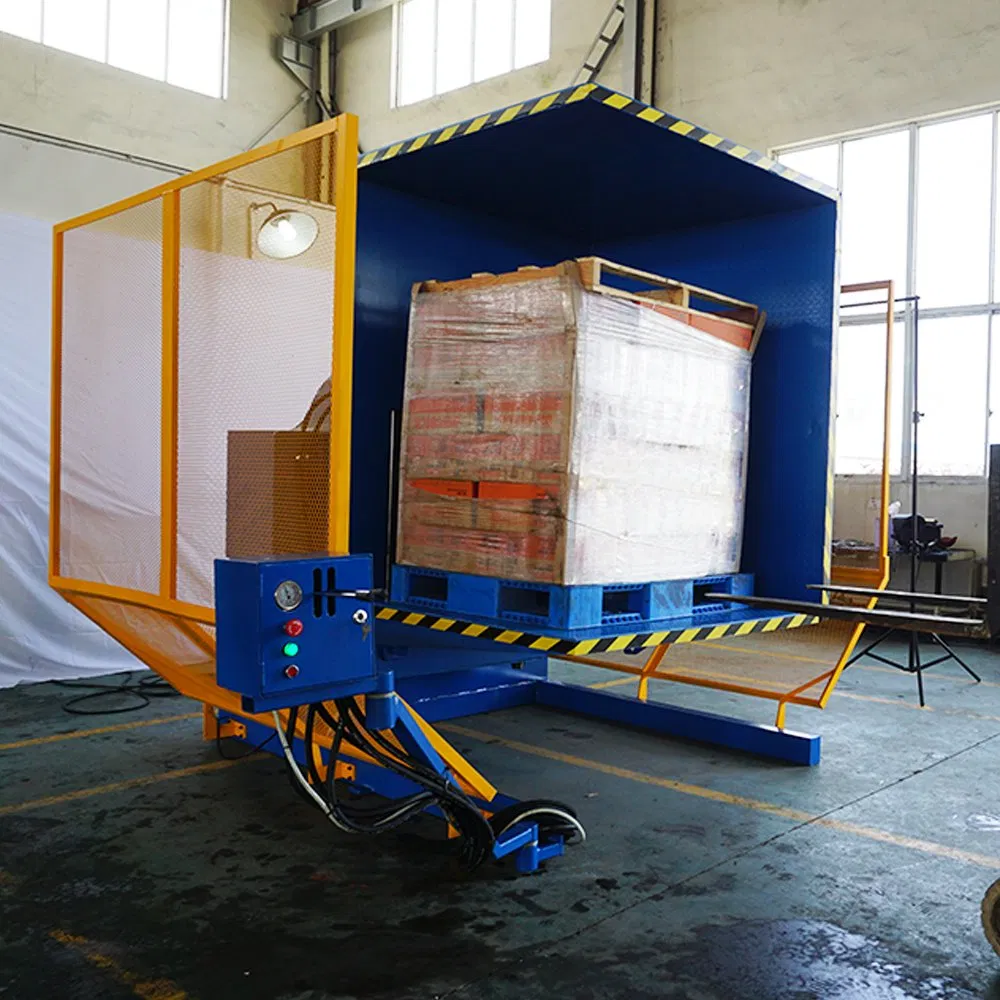
My company slogan is "TOTAL SOLUTION FOR WRAPPING MACHINE," but the principle applies to all the equipment we design and build, including pallet changers. A total solution means we don't just sell you a machine from a catalog. We start with your challenges. For a steel mill owner like Javier, the needs are very different from a pharmaceutical company. He needs a machine that can handle extreme weight, potentially abrasive surfaces, and the need for absolute reliability in a demanding 24/7 environment.
I once worked with a client who handled large, heavy paper rolls. Their first pallet inverter, bought from another supplier, used a standard flat clamping wall. The pressure would sometimes damage the edges of the paper rolls, making the outer layers unusable. It was a constant source of waste. We designed a solution for them with a custom-contoured clamping wall that distributed the pressure evenly around the roll's curve. This small customization completely eliminated the product damage. That is the difference between a supplier and a partner. A supplier sells you a machine; a partner solves your problem.
Core Functionality for Versatility and Performance
These are the non-negotiable features that determine if a machine can do the job effectively.
- Load Capacity: This must safely exceed your heaviest pallet load. For industries like steel, a capacity of 2,000 kg or more is often necessary.
- Adjustable Clamping Pressure: This is crucial for businesses that handle a variety of products. You need gentle pressure for light boxes and strong, secure pressure for heavy, unstable loads.
- Method of Operation: The choice between a 180-degree inverter or a 90-degree tipper depends on your product and floor space. Inverters are often better for sensitive or unstable loads.
Integration and Smart Features for Digital Transformation
For a forward-thinking leader looking to deploy MES, IoT, and data analytics, the machine's "brain" is just as important as its muscle.
- PLC and HMI: The machine must have a modern PLC (Programmable Logic Controller) and a user-friendly HMI (Human-Machine Interface). This allows for easy operation, troubleshooting, and integration.
- Connectivity: Look for Ethernet/IP or Profinet compatibility. This allows the pallet changer to communicate with your central MES or ERP system, providing valuable data on cycle times, throughput, and machine status for your digital dashboard.
- Automation-Ready: The system should have I/O ports and logic to easily connect with upstream and downstream automation like conveyors, wrappers, and Autonomous Guided Vehicles (AGVs).
Safety and Maintenance by Design
In Europe, CE marking is a legal requirement, but you should look for safety features that go beyond the minimum.
| Feature Checklist for High ROI | Why It Matters for ROI | Ideal For... |
|---|---|---|
| CE Certified Safety Systems | Ensures legal compliance in Italy; reduces injury risk and insurance costs. | All European operations. |
| Heavy-Duty Construction | Reduces downtime and maintenance costs over the machine's lifespan. | Heavy industries like steel, building materials, chemicals. |
| Customizable Loading Options | Forklift or conveyor loading allows flexible integration into any line. | Facilities with mixed manual and automated processes. |
| Predictive Maintenance Sensors | Monitors component health (e.g., hydraulics, motors) to prevent unplanned stops. | 24/7 operations where downtime is extremely costly. |
Choosing the right features is about building a machine that will not only solve today's problems but will also grow with your business and support your strategic goals for years to come.
Conclusion
Investing in automated pallet changers is a strategic move for operational excellence. It delivers tangible ROI through efficiency, safety, and compliance, securing a competitive advantage for your business.




